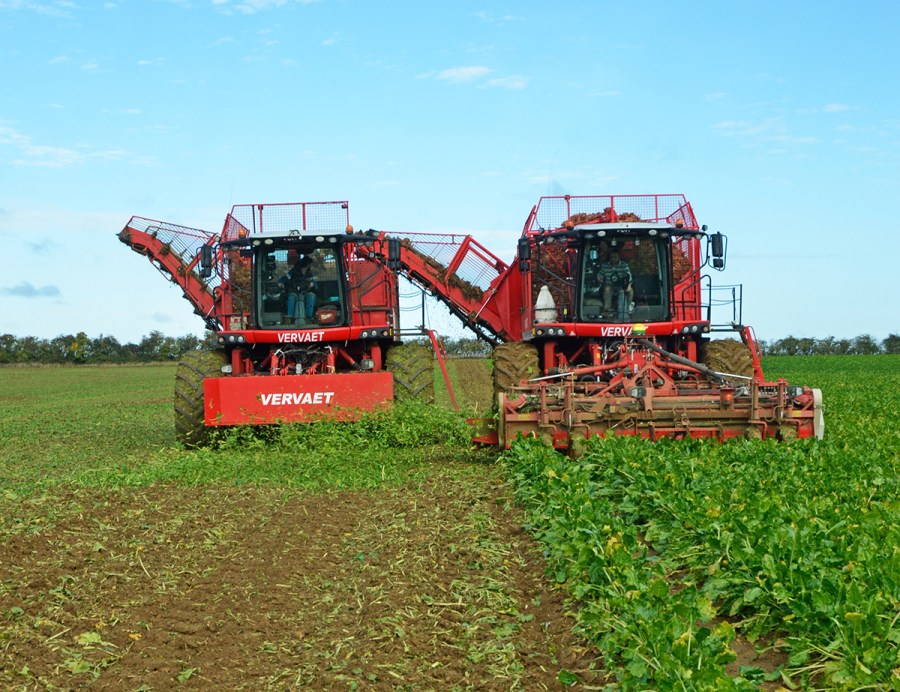Contractor J P Plowright & Son runs the only nine-row Vervaet self-propelled sugar beet harvester in the UK. The business also has a six-row machine and two self-propelled chasers, so you can see there is a big focus on the busy beet season.
Operating mainly in Nottinghamshire and Lincolnshire, J P Plowright & Son is a sugar beet specialist. Based at Barnstone, near Langar, once the last of the 2,430ha or so have been lifted, the focus switches to spring drilling 1,200-1,400ha for next season.
The contractor reckons to have been one of the first to offer a sugar beet harvesting service in 1948, taking delivery of its first six-row harvester, one of the first French-made six-row Moreau harvesters in the UK, in 1974. This was sold to them by Jeremy Riley, before he set up J Riley Beet Harvesters.
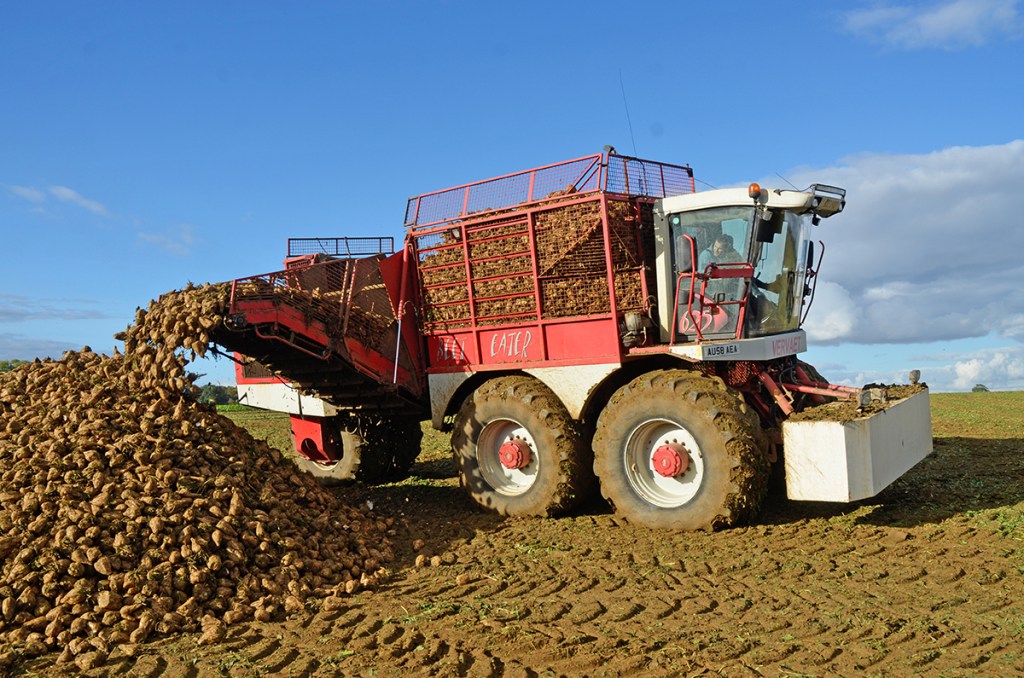
2024 not only marked the 50th anniversary of six row harvesting for the contractor, but also the 30th anniversary of it buying Dutch-made Vervaet harvesters from J Riley, having bought their first, a 17-T model, from the company in 1994. Numerous Vervaets have come and gone since Philip Plowright took delivery of the first one, and in the peak season of 2017, they needed four harvesters (two Vervaet 617s, a 625, plus, a rented Grimme Rexor 630) to lift 3,885ha (or 9,600acres in old money).
Six to nine
The contractor’s long history with the nine-row machine began in 2002. The first machine was replaced with a new one in 2004, which in turn was swapped for a 925 in 2007. This went for a new six-row 617 in 2010, and in 2012, the business went to two 617s and stuck with six-row machines until 2018.
Nottinghamshire and Lincolnshire are the two main counties, but the contractors’ harvesters work in a 70-mile radius around Barnstone, often crossing into Rutland, Leicestershire, Northants and Peterborough, and very occasionally on the road even longer to Tamworth and Derbyshire.
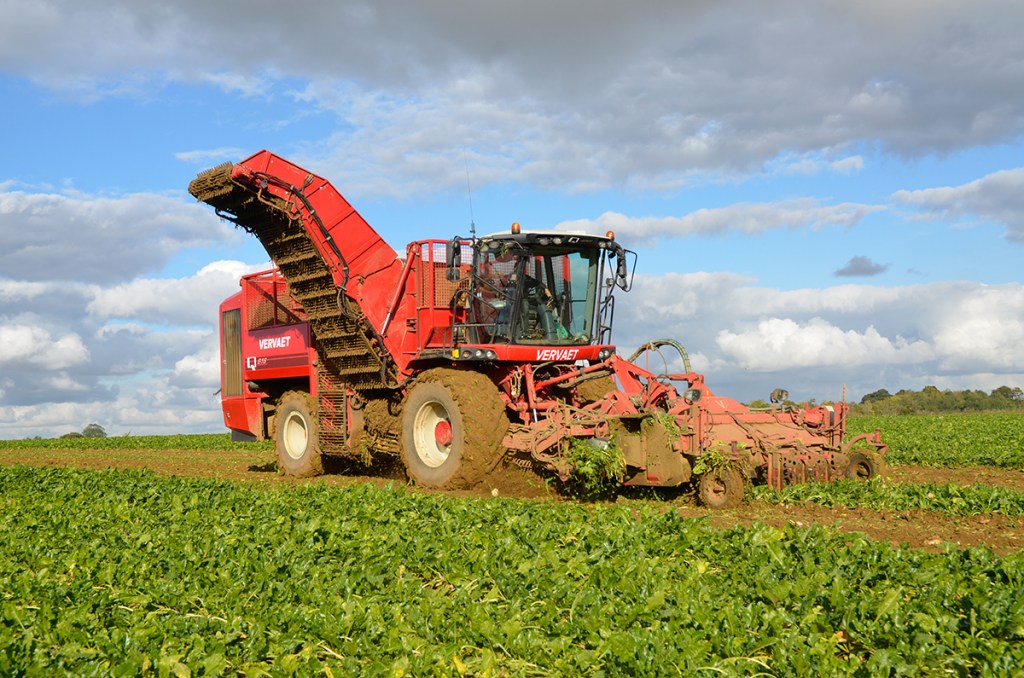
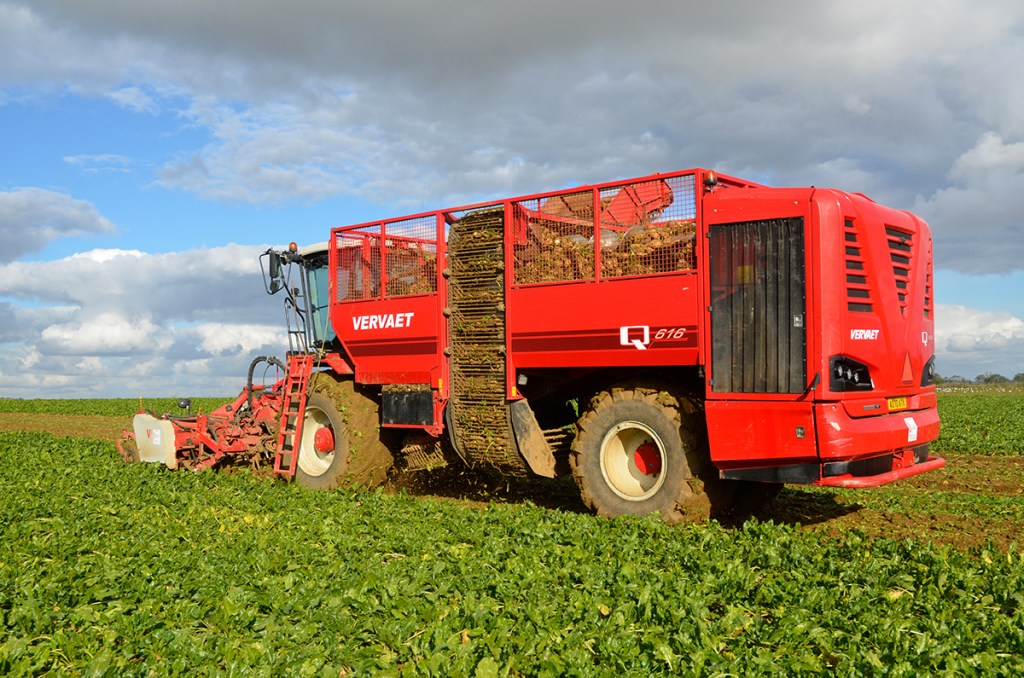
Ed, who took over as main harvester operator in 2010, pilots the new Beet Eater 925 Evo and they also run a four-year-old six-row Q616. Incidentally, this is the first nine-row harvester they did not buy from Jeremy Riley, who retired recently. Sold to them by J. Riley managing director, Matt Carse, it arrived brand new in September 2024.
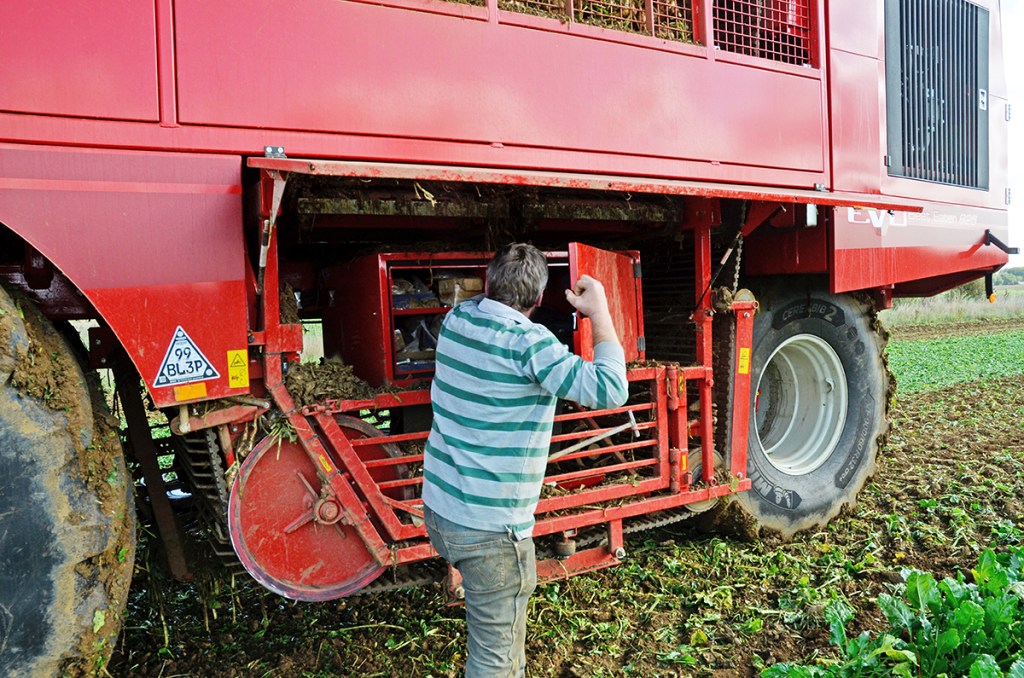
With 15 seasons under his belt, Ed has plenty of operating experience with both six- and nine-row Vervaets.
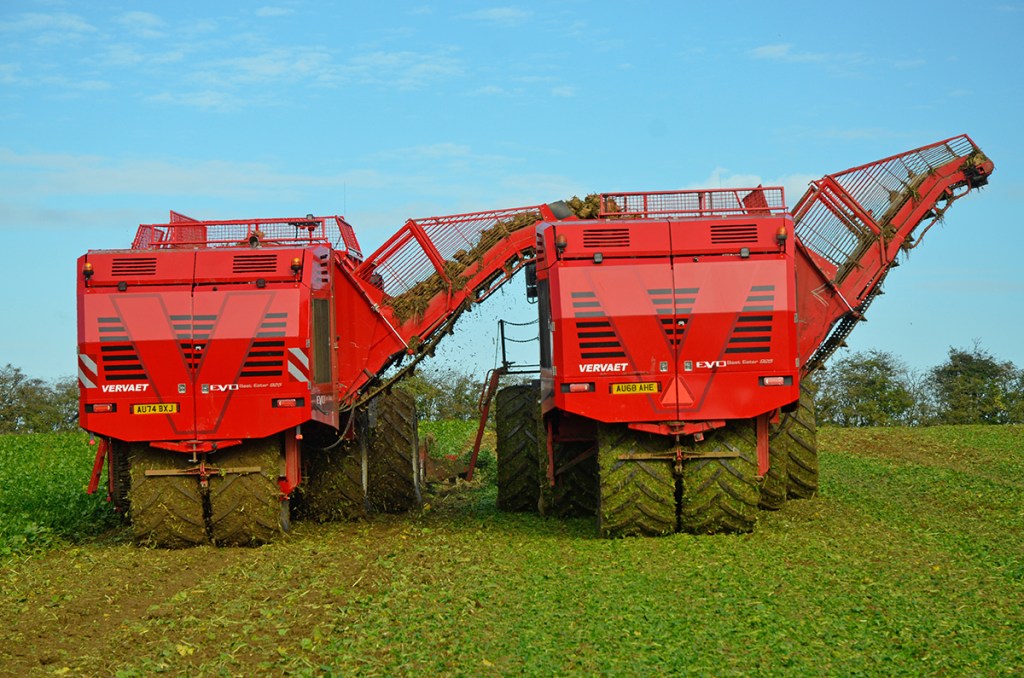
“They are essentially the same,” he says. “The only differences are the extending front axle on the 925 and the wider lifting gear. And while there are lots of small changes between the old 925 and the new one, nothing is dramatically different.”
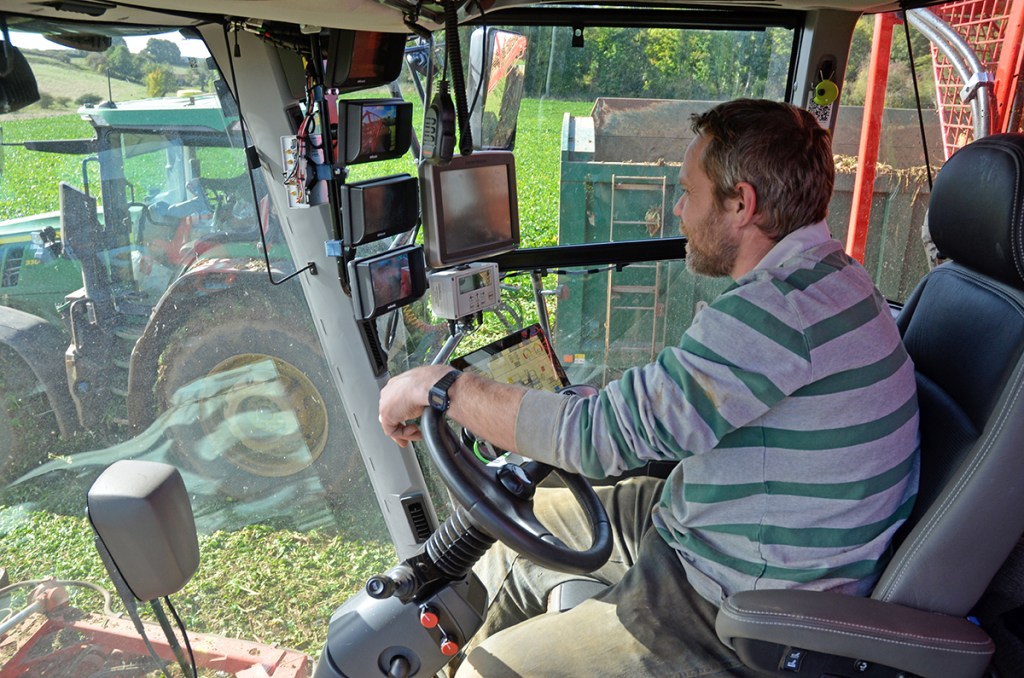
Busy five-month season
Three part-timers join the three fulltime staff (including Ed) for the harvest, which runs from September to end of February although last season Plowrights didn’t finish until early April! All staff leave the yard at 6:00am. The harvesters are greased at night, so they can jump straight into the cabs and get going in the morning. The time varies, but when close to base can be as early as 6.15am.
“We try to take a couple of Sundays off but otherwise it is pretty well beet every day, and when there is nothing to harvest there is always something to do on the harvesters.”
The two machines rarely work together, so share the 2,000-litre fuel bowser. “We will fill the tanks tonight and take the bowser back to the yard. The second team will take it in the morning and replenish the tanks before travelling home.”
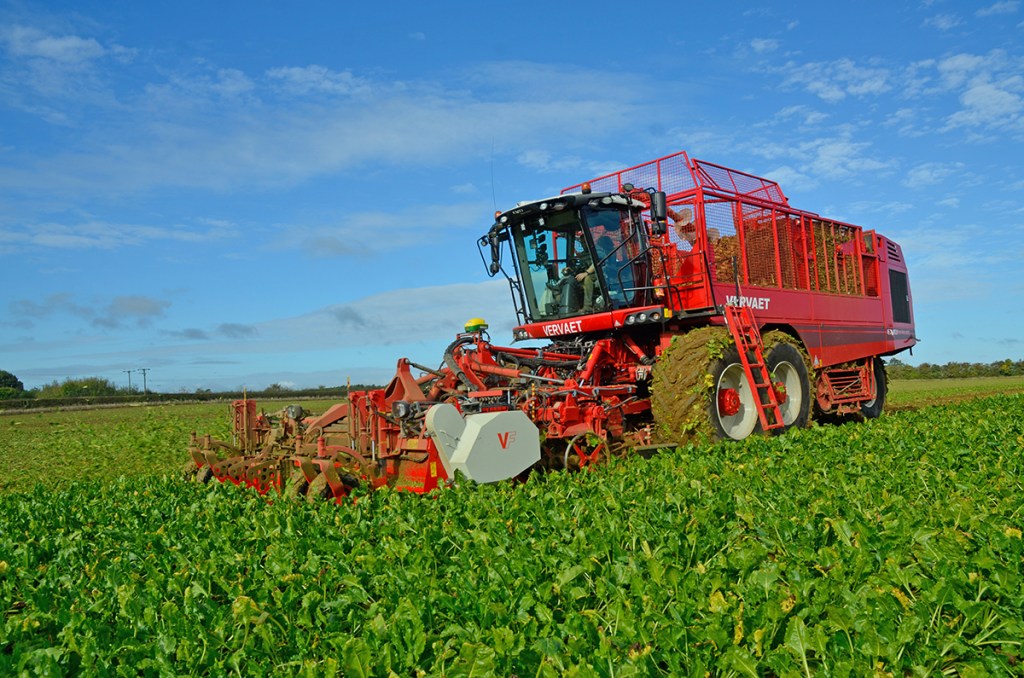
The contractor expects to lift around 2,400ha (6,000 acres) this season, of which 400ha (1000acres) is for themselves on rented land. The 925 will do 1,600ha (4,000 acres) and the Q616 800ha (2,000 acres).
“We normally start around September 20, but there was so much rain last autumn that we were unable to start until the first week of October.”
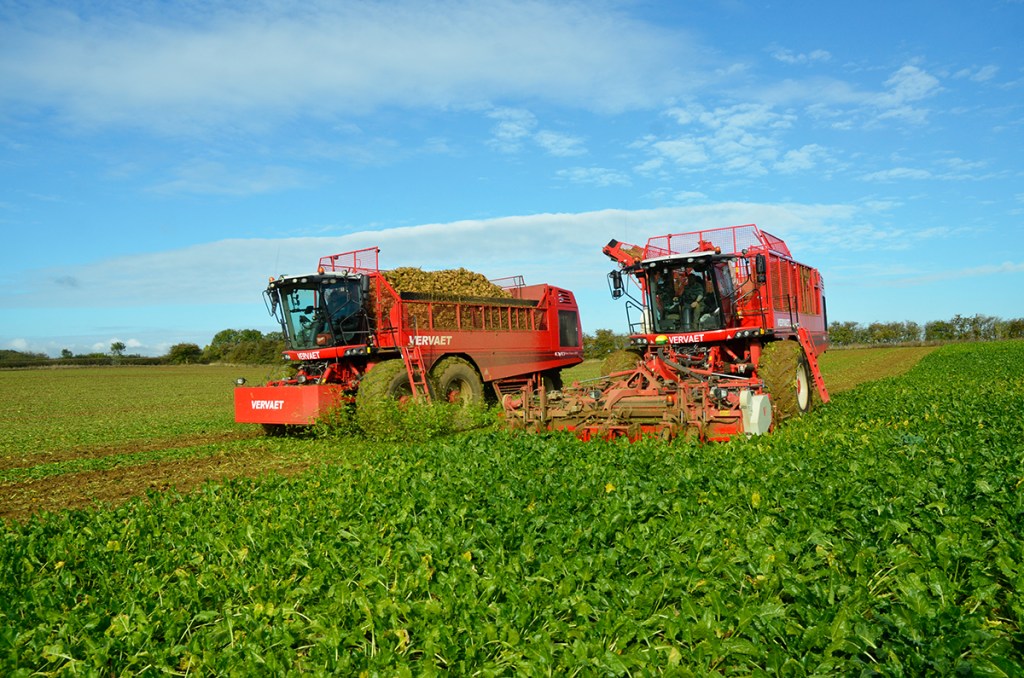
Ed is a big fan of the nine-row harvester. In ideal conditions, the 925 often lifts 30+ha in 15 hours whereas the six-row machine will pull 12-16ha. “The highest output we recorded with a 925 was 3,300t from 102 acres (41.2ha) in 16 hours. It is not often that the conditions and field size are perfect.”
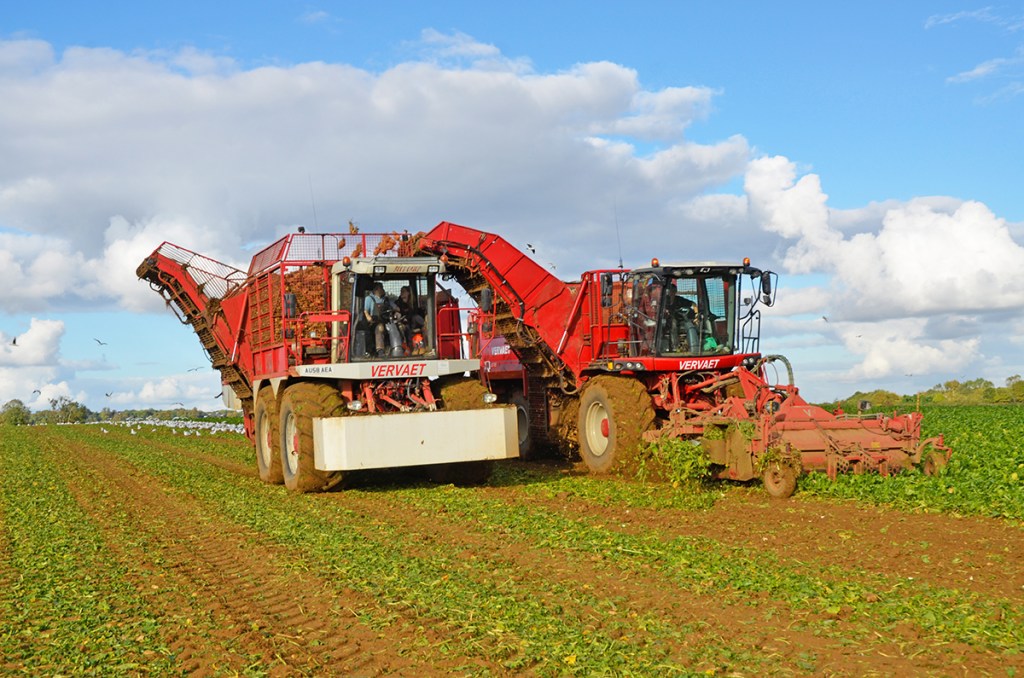
He reckons that there is nothing to match the 925’s weight distribution. “The telescopic front axle ensures that the weight is spread evenly across the full 4.50m working width. The Vervaet harvesters are the only machines that do not run on any land twice, which helps to reduce compaction.”
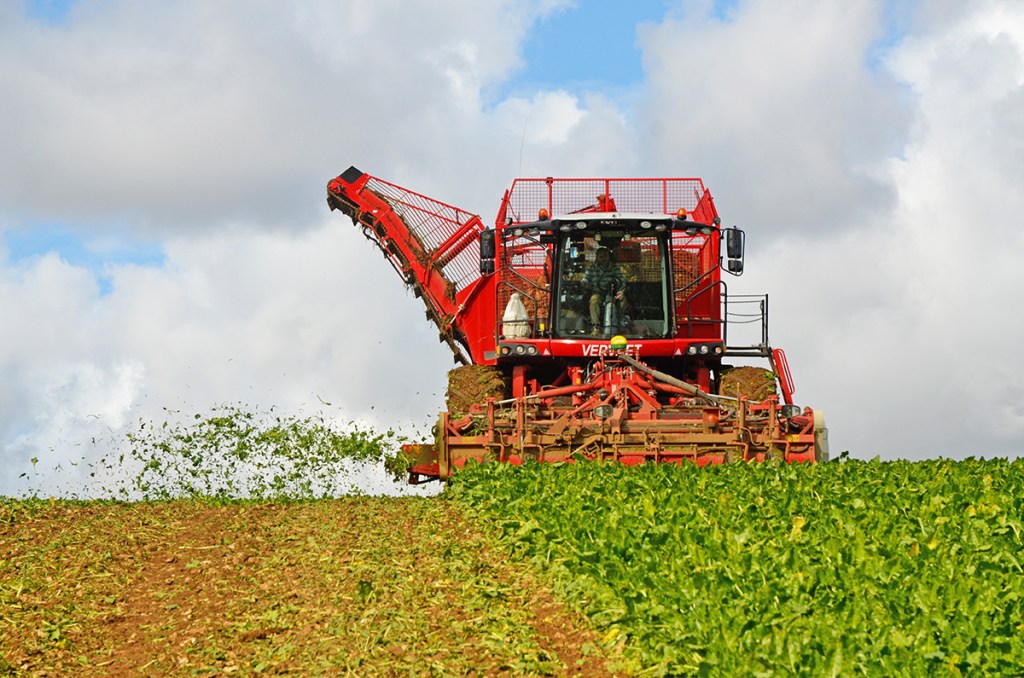
With 653hp on tap from the 15.6l Mercedes-Benz MTU block, the 925 rarely struggles for power. If he does, then it is unloading while going uphill. Travelling at a similar speed (7.0-8.0km/hr) to the six-row machine, the fuel consumption figures favour the 925. The Q616 burns 27-28l/ha. Average consumption of the 925 is 24-25l/ha, whilst taking in an extra three rows.
Ed is the first to admit that the £800,000-£850,000 price tag for a new nine-row harvester is steep. “However, when divided by nine it is a lot less per row than a Beet Eater 625.”
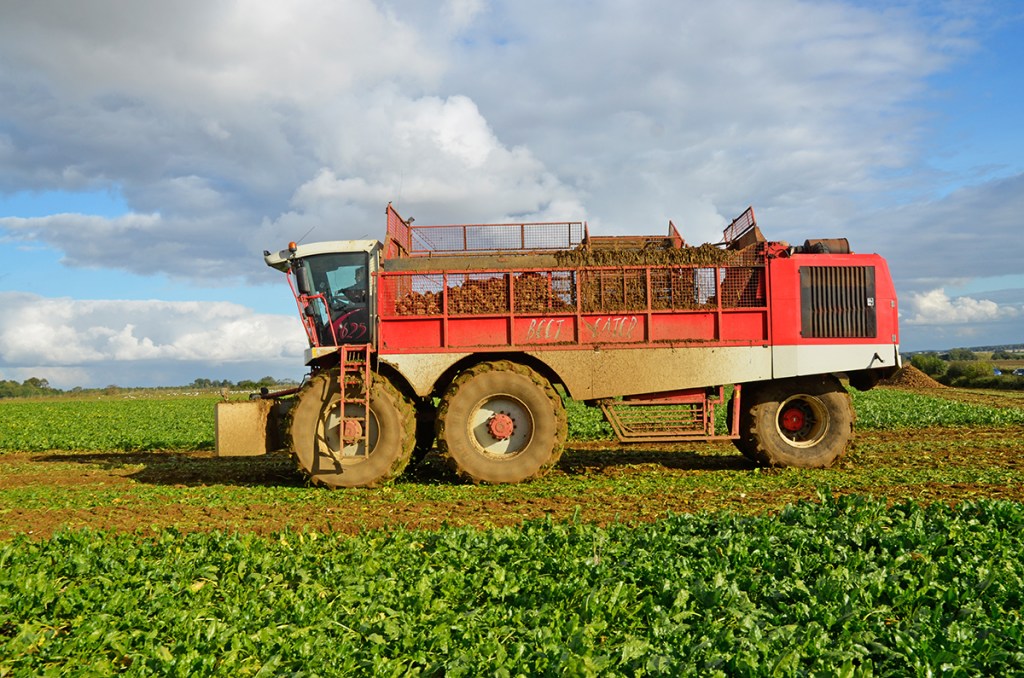
Second life as a chaser
One dilemma facing sugar beet harvesting contractors is when to retire a harvester. Plowright has no hard and fast replacement rule, but tends to swap out a machine after five or six seasons.
“This is when the breakdowns tend to start, not good for a machine that has to be available every day for the five-month season.”
Plowright does not always part-ex the old harvester for a new one. Sometimes it gives one a second and easier life as a chaser. In fact, the contractor’s previous nine-row Beet Eater was also in the field having been converted into a chaser. When new in September 2018, it was one of the first beet harvesters in the UK fitted with a John Deere yield mapping system.
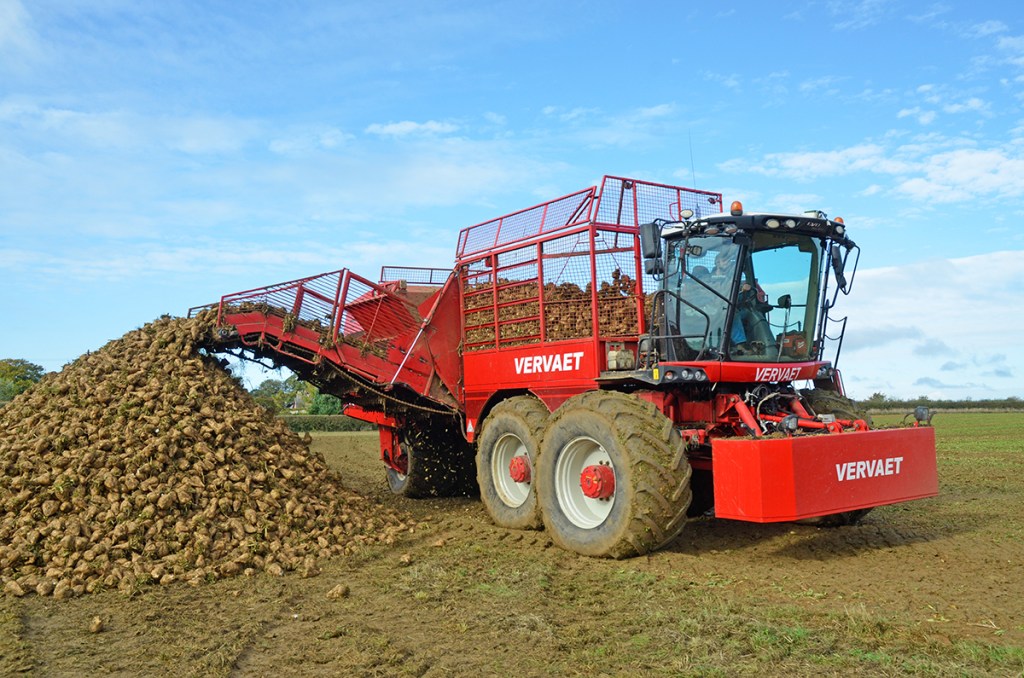
The harvester lifted an astonishing 2,033ha (5,025 acres) in its first season. At the end of the sixth season the harvester had notched up a grand total of 9,800ha (24,216 acres) working in the tough conditions. The 7,000-hour Beet Eater was tired and a lot of expensive refurbishment work was going to be required to keep it fit for non-stop active duty.
“A nine-row harvester needs to cover a lot of ground, but finding the right balance is not easy,” says Ed. “Too many hours can send depreciation through the roof.”
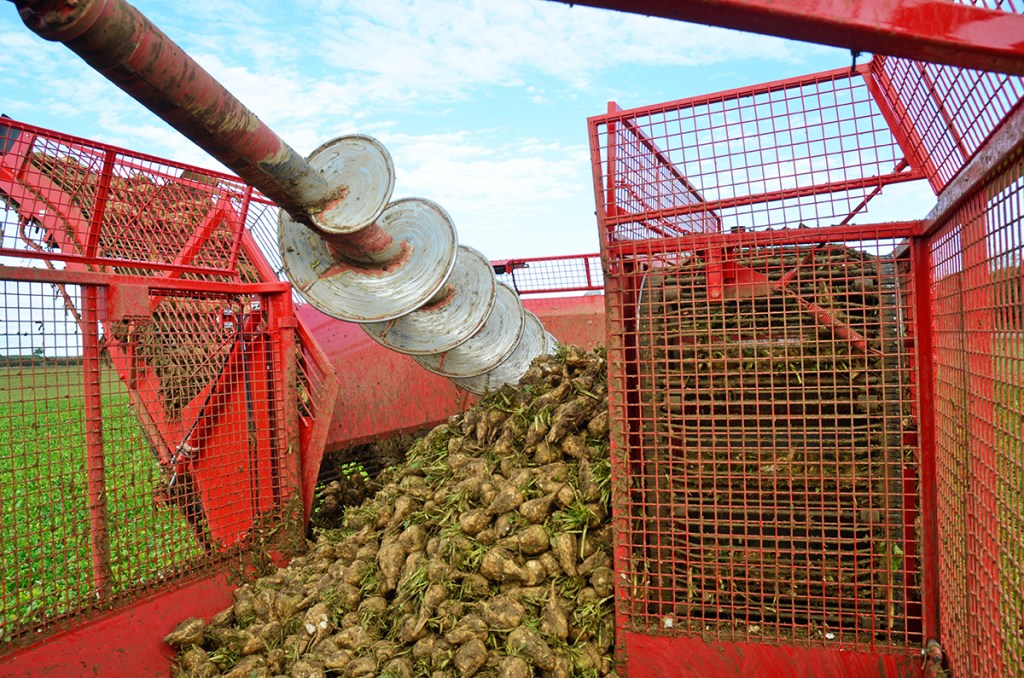
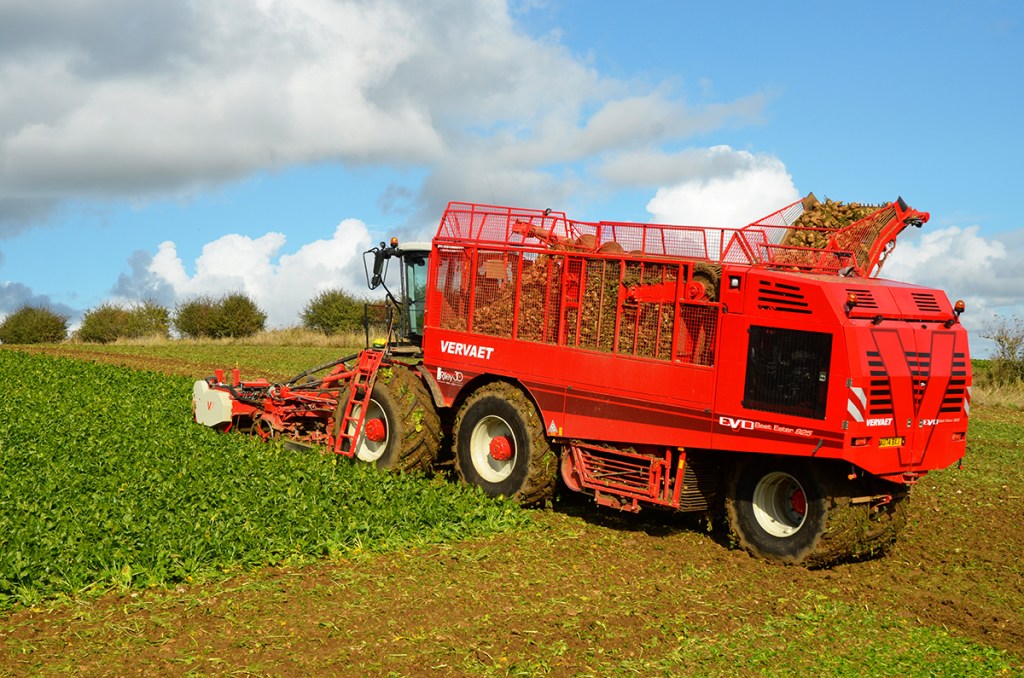
In the end, they concluded that it was better to keep it as a chaser. The 623hp, 15.6-litre Mercedes-Benz MTU engine (older chaser has a Deutz V8) and Sauer Danfoss hydrostatic drive system were retained. So too was the 25t capacity bunker, but last summer the contractor removed all the tank augers, cleaning turbines, and numerous other heavy components from the lower half of the machine.
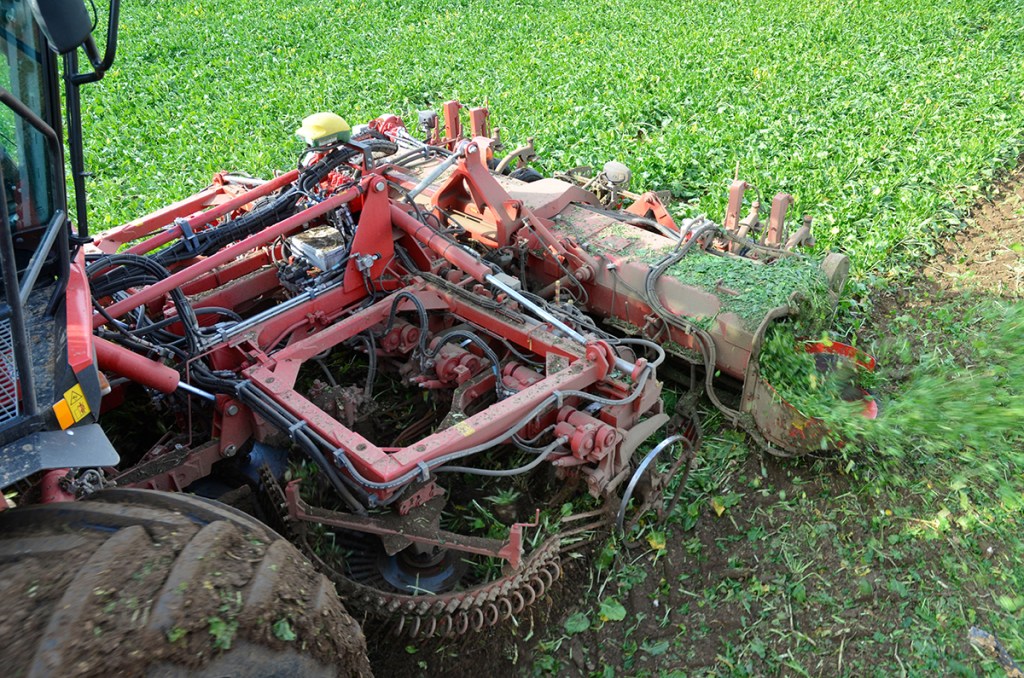
The nine-row harvester completes six laps around the headland when opening up a field – the six-row does nine rounds. On the first run around a field the chaser’s extending front axle is retracted. Running narrower than the lifting gear prevents the rubber from trampling the still to be harvested rows.
The load capacity of the chaser is similar to that of a tractor and trailer. However, in the wet, trailers often grind to a halt and can leave very deep ruts in their wake. “It is in these conditions that the chaser comes into its own, and with a fully loaded bunker the six tyres barely leave a mark.”
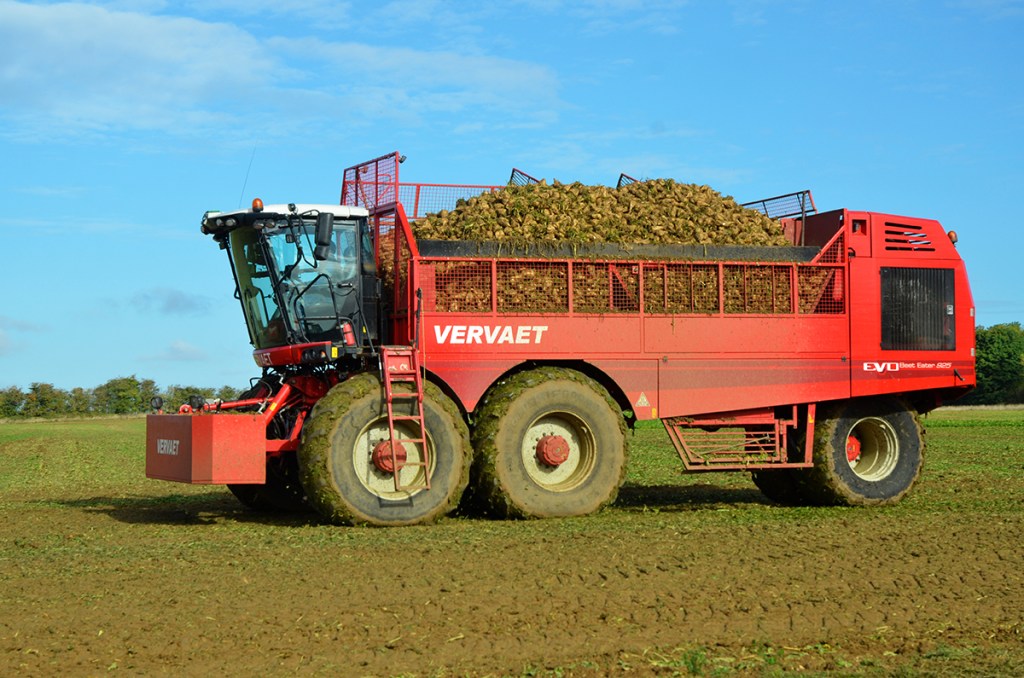
Giving a harvester a second lease of life as a chaser is a good use for a machine with a low residual value, and while it’s not as quick as a tractor and trailer when it’s dry, the roles are often reversed in the wet. Top speed in field mode is 25km/hr, but, on dry land they tend to operate it in road mode where the top speed of 38km/hr. It can hit speeds in excess of 30km/hr when empty and on a dry field.
Also, you cannot put anyone on a chaser. It needs a good driver. Lewis Pate, one of the two part-timers, helped out for a few weeks. Having previously sat on one of the tractors and trailers, he says you have to be careful when driving alongside the 925. “If you get too close then it is difficult to pull away from it with rear wheel steering.”
The future
The contractor’s machines work on some of the most varied land in the country, with steep hills, heavy clay, and stones through the blowing sand.
“This is all fine in the dry but can be a nightmare in the wet,” comments Ed, who adds that they have invested a lot of money in the beet job. “There are not many UK contractors who have got through so many Vervaets as we have. They are perfect for our tough conditions, and the back up from J Riley is outstanding, especially from workshop manager, Harry Skeet whose knowledge is second to none and always goes the extra mile.”
One each of a nine-row and six-row harvester would seem to be the future for the British contracting business. Bought as a two-year-old used machine from 2022, their Q616 lifted 1,194ha (2,950 acres) in 2023 and is now in its third season with the Plowright’s.
A lot of people love the Q, but Ed prefers the six-wheel concept. For this reason, he anticipates that his Q616, whilst a capable enough harvester, will be replaced with a Beet Eater 625 Evo in time, due to its superior performance in arduous conditions.
“The stony land we work on does more damage to the turbine gates than what we are used to with a 625, and the Q is not as good in the wet on our heavy land. It does turn tight, though, and is far more manoeuvrable than a 625.”
WHO IS J RILEY?
Jeremy Riley setup J Riley Beet Harvesters (UK) at Attlebridge in early 1995. In the first year it sold eight 17-T harvesters, but the numbers soon increased to 40 a year. The first two nine-row Beet Eater harvesters in the UK were sold in 2002, with a total of eight making the trip across the water over the next five years. But the introduction of a six-row version in 2005, which became known as the Beet Eater 625 in 2007, offered almost the same cleaning capacity as the nine-row machine whilst retaining the popular six-row format and became the more popular option. A healthy export demand for nine-row harvesters from the continent has seen virtually all return home for a factory overhaul before finding new homes. Six-wheel models make a good base machine for a chaser conversion, with around six of these currently operating in the UK, of which two are based on converted 925 harvesters whilst four are 625 derived. Vervaet purchased 50% of J Riley Beet Harvesters in 2018, and in 2022 Jeremy retired with Matt Carse taking over the role of managing director and becoming a co-owner with Vervaet. Today there are over 180 Vervaet harvesters in the UK.
MACHINE FLEET
J.P. Plowright & Son has three John Deere tractors; a 6190R, 6250R, and a 7330R. There used to be another 7R, but this was recently replaced by a Claas 960 Axion. When they are not lifting or drilling sugar beet, the contractor uses the summer months to overhaul the two chasers and beet harvesters, in between fertilizer spreading, spraying, cultivating and combining. They have two Claas combines (580+TT and 770TT), a John Deere 4050i self-propelled sprayer, and two 18-row sugar beet drills; a Monosem and a Väderstad Tempo (can also apply fertiliser) which arrived new to replace a second Monosem in 2021. Other kit includes a mounted Amazone fertilizer spreader and seven-furrow reversible Kverneland plough. The main cultivator is a 4.0m Philip Watkins Quad-till.
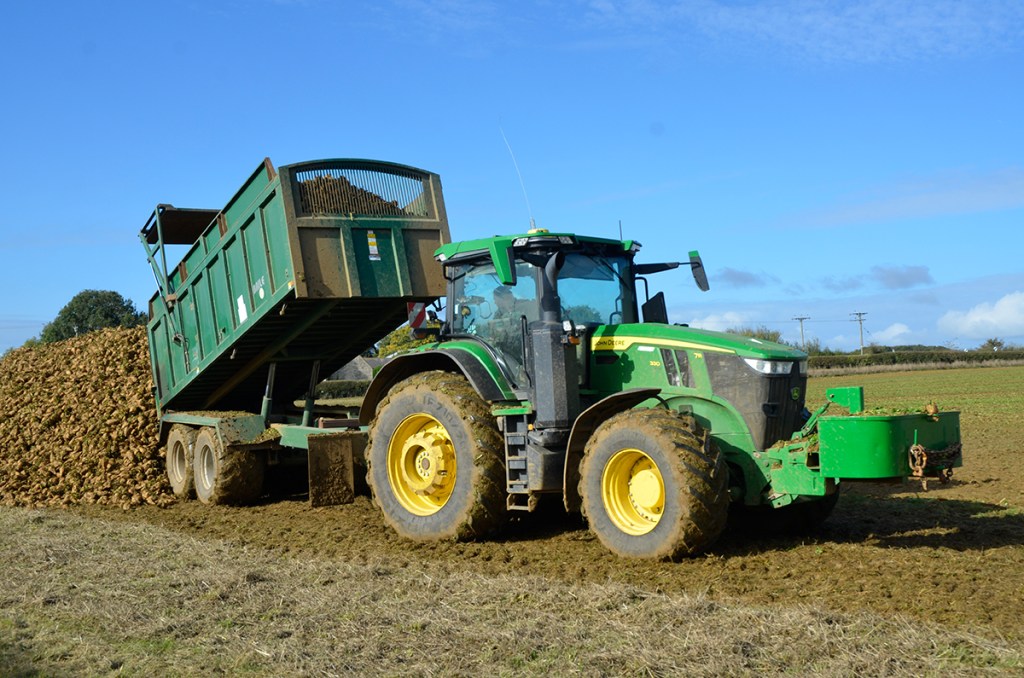
Steven Vale
For more up-to-date farming news click here and subscribe now to profi and save.

